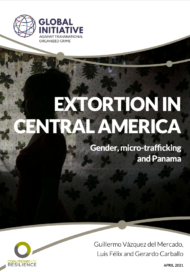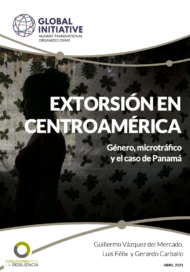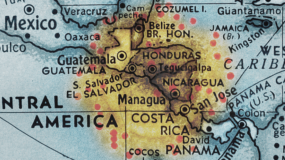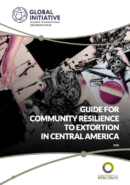Gangs and criminal organizations in Central America continue to seek means of adapting to COVID-19 while communities look to build resilience to its effects. The aim of this report is to contribute to the understanding of extortion in an evolving context as pandemic-related mobility restrictions are enforced and lifted in Guatemala, El Salvador, Honduras, Costa Rica and Panama.
The report identifies the evolving role of women in gang schemes and dynamics; explores criminal structures in Panama and their relationship with extortion; and highlights trends among extortion practices as they shift to other criminal activities such as large-scale and local trafficking
of cannabis and cocaine.
Key points
- Although women have traditionally been only peripherally involved in extortion (as romantic partners and payment collectors), their role has now become more prominent (ringleaders and hired assassins). Public policies are required to prevent and prosecute this involvement.
- Extortion in Panama tends to involve a form of loan sharking, known in the region as gota a gota loans. However, the existence of more than 150 gangs and criminal organizations in the country has led to a rapid growth in territorial extortion.
- In northern Central American countries, drug dealing and trafficking appear to be the gangs’ alternative strategy given the drop in extortion revenues due to the pandemic.
- The monitoring and analysis of information on drug trafficking and extortion by security institutions, as well as gangs’ flexibility to adapt to mobility restric-tions, have uncovered new opportunities for illicit income.
El impacto de la pandemia por COVID-19 continúa generando procesos de adaptación para las pandillas y organizaciones criminales en Centroamérica, así como para las comunidades, que buscan generar procesos de resiliencia ante sus embates. Este informe busca contribuir al entendimiento de la extorsión que se ejerce en el contexto cambiante de la imposición y el levantamiento de restricciones de movilidad vinculadas a la pandemia en Guatemala, El Salvador, Honduras, Costa Rica y Panamá.
El informe identifica la evolución del papel de la mujer en los esquemas y dinámicas de la pandillas o maras; explora las estructuras criminales en Panamá y su relación con la extorsión, y destaca las tendencias de adaptación que presentan las modalidades extorsivas hacia otras actividades delictivas como el tráfico de marihuana y cocaína a gran escala y al menudeo.
Claves
- El papel de las mujeres en la extorsión ha evolucionado de una posición periférica (parejas sentimentales y cobradoras de pagos) a una más protagónica (administradoras y sicarias). Se requieren políticas públicas diferenciadas para prevenir y procesar judicialmente a las mujeres, considerando su condición y su grado de participación.
- Las extorsiones en Panamá se relacionan más con préstamos «gota a gota». No obstante, más de 150 pandillas y organizaciones criminales han generado un crecimiento acelerado de la extorsión territorial.
- En los países del norte de Centroamérica, el narcomenudeo y el tráfico de drogas parecen constituirse como la estrategia alternativa de las pandillas a la reducción de ingresos por extorsión ocasionados por la pandemia.
- Las áreas de oportunidad existentes en el seguimiento y análisis de información relacionadas con el tráfico de drogas y extorsión de las instituciones de seguridad, así como la flexibilidad de las pandillas para adaptarse a las restricciones de movilidad, abrieron oportunidades de ingresos ilícitos.





